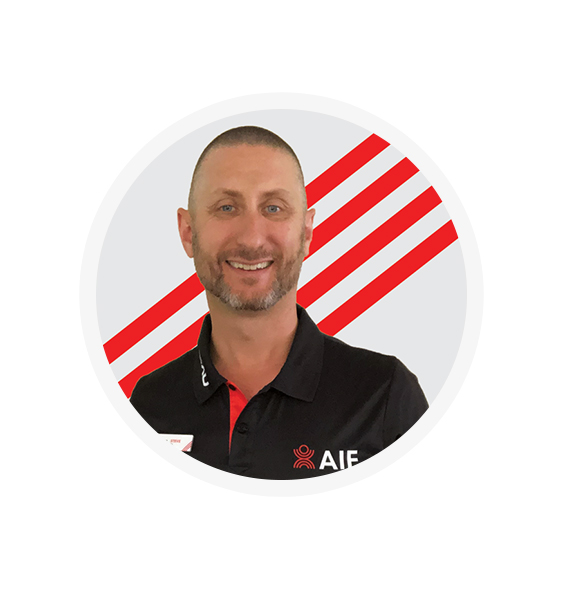AIF In The Media
- All Articles
- Consumer Press
- Elite Sports Partnerships
- Fitness Industry Podcast
- Network Magazine
- Trade Press

The health trends worthy of your attention in 2022
As we dive into another year with COVID, a look at some other health trends on the menu for 2022 – new ways to get fit, to check in with your gut – and maybe nurture a better relationship with alcohol.
The micro-workout
If COVID has a silver lining, it’s that working from home makes it easier to slot in quick bites of exercise, so it’s no surprise that micro workouts are one of 2022’s trends predicted by the Australian Institute of Fitness.
“These are short bursts of exercise lasting four to 12 minutes – but done at a high intensity in a HIIT style format, and great for people who are time-poor but keen to improve their fitness,” says Kate Kraschnefski, head of compliance and training at the AIF. “But you need a decent foundation of fitness to start from and you have to work at your maximum capacity to reap the benefits.”
A typical session could look like this:
- Jump squats, then rest
- Alternating backward lunges, then rest
- Burpees, then rest
- Sprint, then rest
Do each exercise for 20 seconds; rest for 10 seconds. Do two sets – a total of four minutes. After the first four-minute block, take a one-minute rest. Repeat two to three times.
Being more mindful of your gut – the clues in your poo
The way to cultivate a healthy mix of gut microbes is with whole foods rich in different fibres – we know that. But there’s also a growing recognition that we’re all different and should monitor how our gut reacts to what we eat. If one particular grain or fibre makes you feel bloated, for example, try another, says associate professor Claus Christophersen, head of systems biology and microbiome research from Western Australia’s Edith Cowan University.
How rapidly what we eat is expelled as poo provides another clue to gut health. The ideal transit time from plate to toilet bowl is individual but generally 18 to 28 hours, and a sign that you’re feeding gut microbes the right stuff, he says.
“A slower transit time suggests you’re not eating enough dietary fibre, and maybe too much fast food and highly processed food, which can lead to gut microbes producing substances that can harm the gut,” he adds.
“A slower transit time suggests you’re not eating enough dietary fibre, and maybe too much fast food and highly processed food, which can lead to gut microbes producing substances that can harm the gut.”
Claus Christophersen, Edith Cowan University.
To check your transit time, he suggests the Blue Poop Challenge, a test devised by UK scientists that involves eating muffins laced with blue food colouring. Transit time is gauged by how long it takes for blue poo to appear in the loo.
‘Fake fish’ protein from the sea
We’ve seen plant-based meat take over supermarkets. And it’s only a matter of time before plant-based fish has its moment. In South Australia, scientists from the Marine Bioproducts Cooperative Research Centre are finding ways to harvest protein from the ocean without plundering fish stocks or using farmed fish. Instead they’re working on turning micro-algae into sustainable protein foods which may reach the market this year, says Professor Wei Zhang, who heads both the MBCR and the Centre for Marine Bioproducts Development at Flinders University, a partner in the project.
“Micro-algae is the source of omega-3 fats in fish – we could produce more omega-3 fats from micro-algae than from fish,” he says.
… and ‘dairy’ milk – without cows
Plant-based “alt-milks” like soy, almond, rice and oat now make up about 8 per cent of milk sales in Australia and they’re only set to grow, with emerging “mylk” varieties such as hemp, pea and cashew appearing in some health food stores and cafes. And now a team of researchers from CSIRO laboratories in Melbourne and Canberra are using natural yeasts to synthesise the dairy proteins, whey and casein, to create a milk that emulates cow’s milk, but without the cow – and which should reach supermarkets next year.
“We want to deliver a product that appeals to the growing number of dairy avoiders but still has the taste of dairy milk,” says Jim Fader, chief executive of Eden Brew, the Sydney-based start-up that will market the finished product.
A slower version of HIIT – High Intensity Resistance Training
If all that jumping puts you off HIIT, HIRT could be for you. While HIIT tends to focus on cardio exercises, HIRT is built around strength-based movements that work the major muscles of the body, explains Kate Kraschnefski.
“You don’t use super heavy loads, but weights that are challenging for around eight to 15 repetitions, depending on the session. The intensity works muscles as well as increasing your heart rate, so you can get your cardio in and resistance training too. With less jumping, it’s also more accessible than HIIT – in HIRT the intensity comes from swapping the high impact for the load from the weights.”
She suggests doing this set of exercises five times, resting for 60 to 90 seconds between each round:
- 8 dumbbell squats
- 8 push-ups
- 8 seated rows
- 8 kettlebell deadlifts
- 8 barbell push-presses
Use a weight that’s challenging, but can be used safely and effectively for every rep.
Drinking… in moderation
Drinking less, or not at all, continues to be normalised, says Andy Moore, chief executive of Hello Sunday Morning, the free online service that helps people cut down on alcohol.
“The sober curious movement is gaining momentum, especially among 18 to 30-year-olds, and it’s filling a big need. There’s a demand for something between café culture and alcohol culture, and sales of low or no-alcohol beer, wine and spirits are increasing.
“Social media is one factor driving the trend – no one wants to be documented on social media when they’re drunk – and it’s helped group together people who don’t want to drink or who want to drink less, so that they feel they’re not alone.”
























